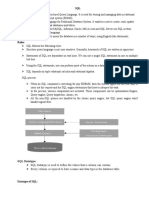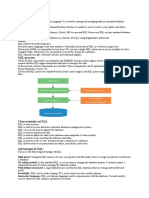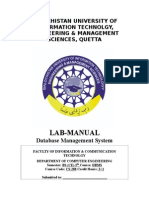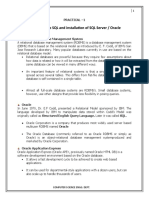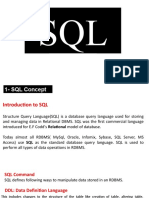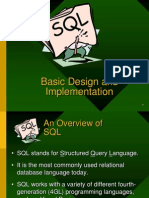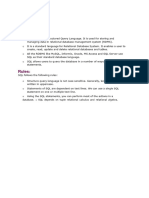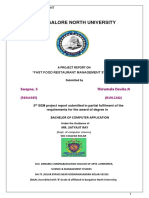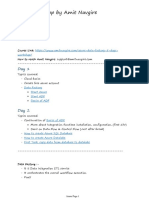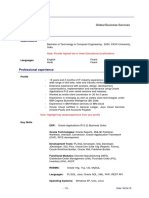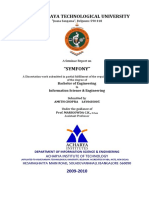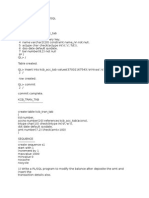0% found this document useful (0 votes)
12 views7 pagesAdvanced Database
Structured Query Language (SQL) is a language used to access and manipulate data in relational database management systems. It includes commands for creating, modifying, and deleting database tables, as well as for inserting, updating, and deleting records. SQL also allows for the definition of constraints to ensure data integrity within the database.
Uploaded by
beharu.educ23Copyright
© © All Rights Reserved
We take content rights seriously. If you suspect this is your content, claim it here.
Available Formats
Download as PDF, TXT or read online on Scribd
0% found this document useful (0 votes)
12 views7 pagesAdvanced Database
Structured Query Language (SQL) is a language used to access and manipulate data in relational database management systems. It includes commands for creating, modifying, and deleting database tables, as well as for inserting, updating, and deleting records. SQL also allows for the definition of constraints to ensure data integrity within the database.
Uploaded by
beharu.educ23Copyright
© © All Rights Reserved
We take content rights seriously. If you suspect this is your content, claim it here.
Available Formats
Download as PDF, TXT or read online on Scribd
/ 7











